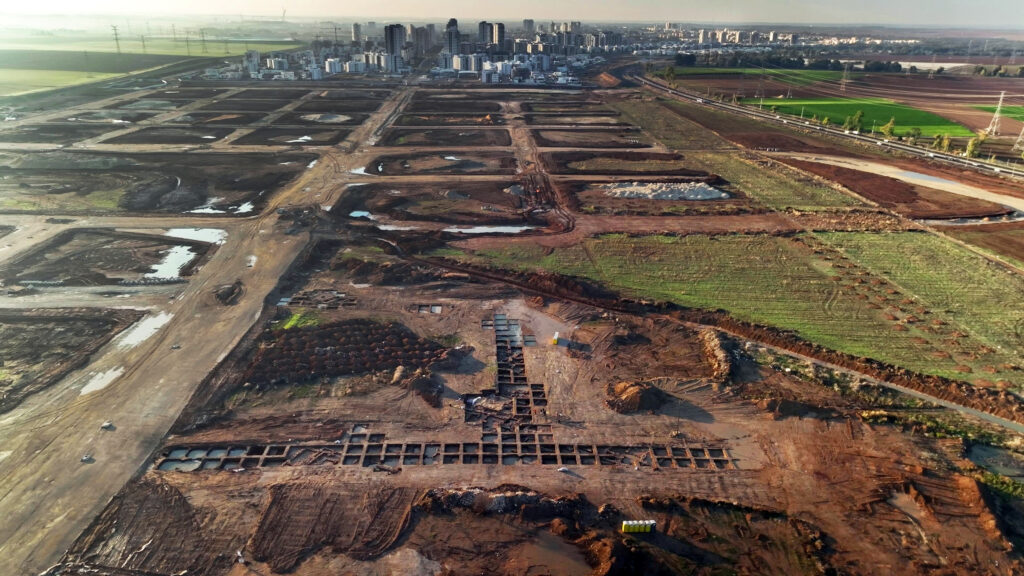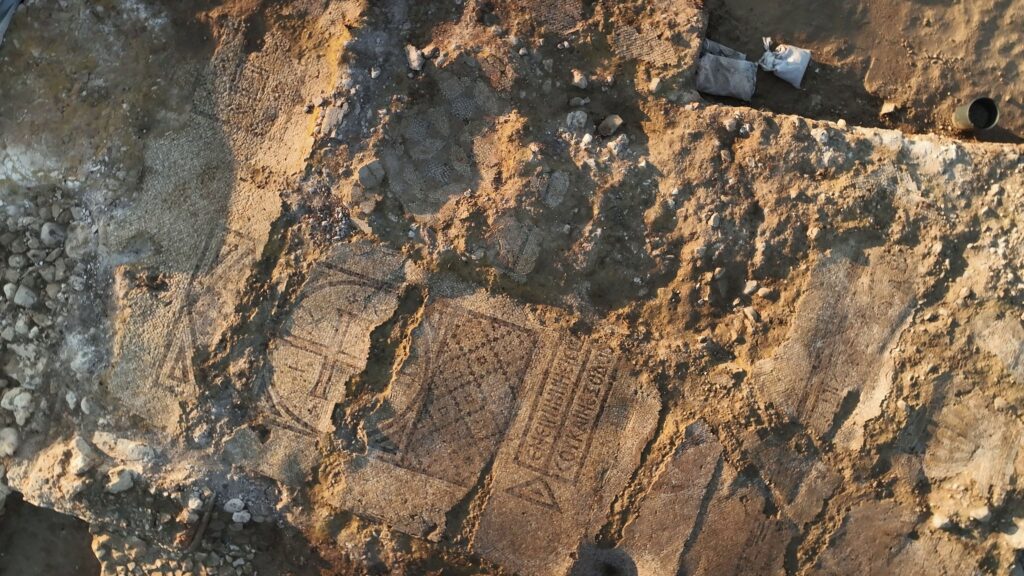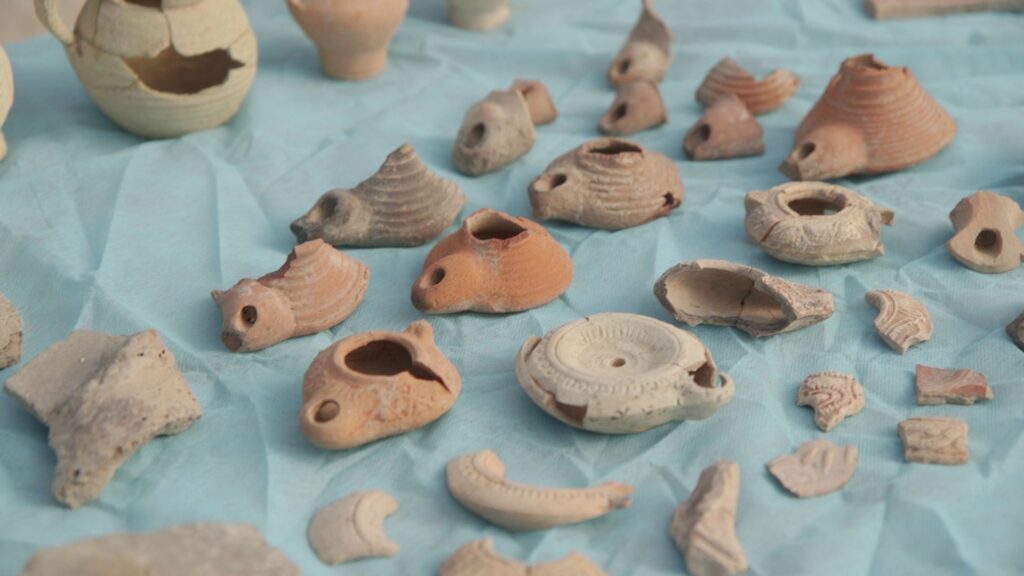
Ancient Monastery and Winery Discovered at Kiryat Gat Site
A significant archaeological discovery was made by the Israel Antiquities Authority(IAA) during development work for the new “Karmey Gat North” neighborhood. The findings include a Byzantine monastery featuring a colorful mosaic floor with a Greek inscription, a sophisticated winepress, and multiple other structures.

Archaeological dig north of Kiryat Gat (Photo courtesy IAA)
The site, which archaeologists describe as “the largest and most significant site discovered in the region from the Roman and Byzantine periods,” contains at least ten buildings. Dating back to the Byzantine period (5th-6th centuries CE), the monastery was part of a settlement that existed during the Roman period and flourished for approximately 600 years.
The monastery’s most striking feature is its mosaic floor, which displays various decorative elements, including crosses, lions, doves, an amphora, flowers, and geometric patterns. At its center lies a Greek inscription quoting Deuteronomy 28:6: “Blessed are you when you come in, and blessed are you when you go out.” The mosaic’s intricate design incorporates tiny stones to emphasize its cross-shaped decorations.

Mosaic depicting an amphora (Photo courtesy IAA)
The excavation yielded numerous artifacts indicating a wealthy community, including imported ware, coins, marble elements, and metal and glass vessels. Adjacent to the monastery, archaeologists uncovered a sophisticated winepress that underwent multiple repairs and renovations throughout its use. The winepress features distinctive blue and white stone mosaic flooring in its fermentation rooms and collecting vat, with traces of red paint still visible on the plastered surfaces. Greek letters, likely as construction markers, remain visible on some of the northern collecting vat floor slabs.

Roman and Byzantine artifacts (Photo IAA)
According to excavation managers Shira Lifshitz and Maayan Margulis, “The early settlement is sited on a central road junction connecting the mountain region to the coastal plain. It served the area’s smaller settlements and travelers passing by.” The site shows continuous habitation from the first century CE through the late sixth century CE, with significant expansion during the Byzantine period.
The settlement also appears to have been a center for pottery production, as evidenced by ceramic factory waste, garbage pits, and unique vessels specific to this location. Svetlana Talis, Director of the Southern Region at the Israel Antiquities Authority, emphasized the discovery’s significance in highlighting “the historical richness of Kiryat Gat and its surroundings, shedding light on the centrality of the region in antiquity.”
In Biblical times, Kiryat Gat, in southern Israel near the border with Judah, was one of the five major cities of the Philistines. It was one of the last refuges of the Anakim (literally, ‘giants’) in front of the conquering Israelites under Joshua (Joshua 11:22). Gath was either subdued during the days of the prophet Samuel, or by King David, although the first book of Kings (2:39) states that in the time of King Solomon it was still ruled by a Philistine king named Achish (1 Samuel 27:1–7). The narrative in the first book of Chronicles (1 Chronicles 7:21) relates that Ezer and Elead, sons of Ephraim, were killed by men who were natives of Gath, because “they came down to take their livestock”. Gath is named as one of 15 cities fortified by King Rehoboam, son of King Solomon, which were captured by Shishak, king of Egypt (2 Chronicles 11:8; 12:4).
In Hebrew, Kiryat Gat” means “the place of the winepress”.
Mark Avrahami, Head of Artistic Conservation at the Israel Antiquities Authority, noted that “The mosaic discovered in Kiryat Gat is one of the most unique ever found in Israel.” The mosaic will undergo a complex transfer process to the authority’s workshop for preservation before being displayed publicly in the city.
Eli Escusido, Director of the Israel Antiquities Authority, highlighted how urban expansion projects provide opportunities to explore ancient history: “Together, we strive to present these findings as part of a policy aimed at connecting residents to the historical narratives near their homes.”
The Israel Land Authority, which funds salvage excavations nationwide, views this discovery as symbolic of the connection between past and future. As Director Yaacov Kvint explained, the authority “invests tens of millions of shekels annually in salvage excavations for various projects across the country, aimed at uncovering and documenting the rich history and archaeology beneath the neighborhoods of the future.”
The post Ancient Monastery and Winery Discovered at Kiryat Gat Site appeared first on Israel365 News.
Israel in the News